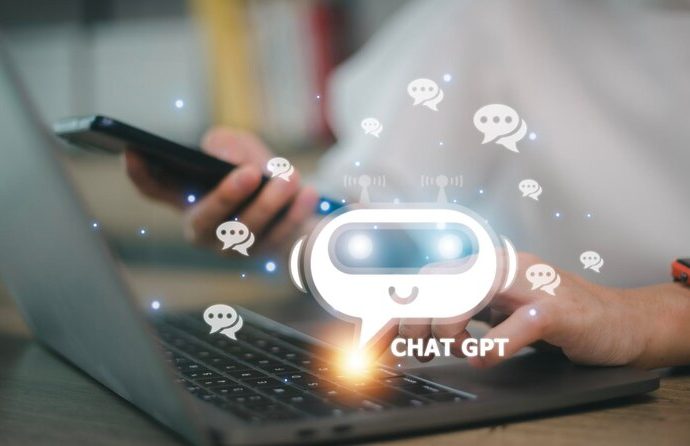Unlocking Learning: A Guide to Teens Excelling with ChatGPT in Education Introduction Hello, my name is Fred and I am a former teacher and a researcher on conversational AI and education. I have been fascinated by the potential of ChatGPT, a powerful natural language processing model that can generate coherent and fluent texts based on
Unlocking Learning: A Guide to Teens Excelling with ChatGPT in Education
Introduction
Hello, my name is Fred and I am a former teacher and a researcher on conversational AI and education. I have been fascinated by the potential of ChatGPT, a powerful natural language processing model that can generate coherent and fluent texts based on any given input. ChatGPT can be used for various purposes, such as chatbots, virtual assistants, and content creation. In this article, I will explore the benefits and challenges of using ChatGPT for teens in education, and provide some practical tips and examples for teachers, school administrators, and parents.

Image by rawpixel.com on Freepik
Benefits of ChatGPT for Teens in Education
ChatGPT can enhance learning outcomes, engagement, and motivation for teens in various subjects and skills, such as language, literature, history, and writing. Here are some of the ways ChatGPT can help teens in education:
- ChatGPT can analyze texts and generate summaries, outlines, and key points, which can help teens improve their reading comprehension and critical thinking skills. For example, ChatGPT can summarize a long article into a few sentences, or create an outline for an essay based on a given topic.
- ChatGPT can produce original and creative content, such as stories, poems, essays, and speeches, which can help teens develop their writing and communication skills. For example, ChatGPT can generate a story based on a given prompt, or write an essay based on a given thesis statement.
- ChatGPT can also foster creativity, critical thinking, and media literacy for teens, by allowing them to experiment with different perspectives, styles, and formats. For example, ChatGPT can rewrite a text in a different tone, genre, or point of view, or create a parody of a famous text or speech.
ChatGPT has been shown to have a positive impact on education, according to some studies and reports, such as [How ChatGPT Can Improve Education, Not Threaten It], [ChatGPT: opportunities and challenges for education], and [Benefits Of Conversational AI In Education].
Challenges of ChatGPT for Teens in Education
ChatGPT is not without its drawbacks and limitations, however. There are some potential challenges and risks of using ChatGPT for teens in education, such as:
- Technical issues, such as compatibility, accessibility, and reliability. ChatGPT may not work well with some devices, platforms, or browsers, or may require a stable internet connection and sufficient storage space. ChatGPT may also malfunction or produce errors or inaccurate results at times.
- Ethical concerns, such as privacy, security, and accountability. ChatGPT may collect, store, or share personal or sensitive data from users, or may be hacked or misused by malicious actors. ChatGPT may also raise questions about who is responsible for the quality and consequences of the generated texts.
- Academic integrity, such as plagiarism, cheating, and deception. ChatGPT may pose some risks for the quality and originality of students’ work, as they may copy, modify, or claim the generated texts as their own, or use them to deceive or mislead others. ChatGPT may also affect the evaluation and feedback of students’ work, as it may be difficult to distinguish between human and machine-generated texts.
ChatGPT also faces some common misconceptions and fears, such as:
- Replacing human teachers. ChatGPT is not meant to replace human teachers, but to complement and augment them. ChatGPT can provide assistance and support, but cannot replace the expertise, guidance, and feedback of human teachers.
- Reducing human interaction. ChatGPT is not meant to reduce human interaction, but to enhance and facilitate it. ChatGPT can provide opportunities for collaboration and communication, but cannot replace the social and emotional aspects of human interaction.
- Undermining human intelligence. ChatGPT is not meant to undermine human intelligence, but to challenge and stimulate it. ChatGPT can provide challenges and resources, but cannot replace the creativity, critical thinking, and media literacy of human intelligence.
ChatGPT has also been discussed in some articles and reports that address the challenges and implications of ChatGPT for education, such as [ChatGPT: The Next Firestorm in Education], [Frontiers | Challenges of online learning amid the COVID-19: College Students’ Perspectives], and [Tackle Challenges of Online Classes Due to COVID-19].
Tips and Examples for Using ChatGPT for Teens in Education
To use ChatGPT for teens in education effectively and responsibly, here are some practical and actionable tips and examples for teachers, school administrators, and parents:
- Set clear learning objectives and expectations. ChatGPT should be used as a tool to achieve specific learning goals, not as a substitute for learning. ChatGPT should also be used with honesty and integrity, not for cheating or deception. ChatGPT should be used with proper citation and attribution, not for plagiarism or misrepresentation.
- Provide guidance and feedback. ChatGPT should be used with supervision and support, not without guidance or feedback. ChatGPT should also be used with critical thinking and media literacy, not without evaluation or verification. ChatGPT should be used with creativity and originality, not without improvement or revision.
- Monitor progress and performance. ChatGPT should be used with assessment and reflection, not without measurement or feedback. ChatGPT should also be used with feedback and improvement, not without recognition or reward. ChatGPT should be used with motivation and engagement, not without challenge or interest.
Here are some tools and resources for using ChatGPT for teens in education:
- Khanmigo from Khan Academy. Khanmigo is a chatbot that uses ChatGPT to help students learn math, science, and more. Khanmigo can answer questions, provide hints, and give feedback. Khanmigo can also generate quizzes, exercises, and games based on the students’ level and preferences.
- ChatGPT Playground. ChatGPT Playground is a web-based platform that allows users to interact with ChatGPT and generate texts based on various inputs and settings. ChatGPT Playground can be used to experiment with different modes, such as chat, story, essay, and parody, and to customize different parameters, such as temperature, top-k, and top-p.
- ChatGPT Tutor. ChatGPT Tutor is a virtual assistant that uses ChatGPT to help students with their homework, assignments, and projects. ChatGPT Tutor can analyze texts, generate summaries, outlines, and key points, and produce original and creative content, such as stories, poems, essays, and speeches.
Here are some examples of how ChatGPT can be used for teens in education in different scenarios:
- Homework assignment. A student is assigned to write a summary of a chapter from a history textbook. The student can use ChatGPT to generate a summary based on the chapter, and then use it as a reference or a starting point for their own summary. The student can also use ChatGPT to check the accuracy and completeness of their summary, and to improve their grammar and vocabulary.
- Group project. A group of students is assigned to create a presentation on a topic related to literature. The group can use ChatGPT to generate an outline for their presentation, and then use it as a guide or a template for their own outline. The group can also use ChatGPT to generate some slides, images, or quotes for their presentation, and to add some creativity and flair to their presentation.
- Self-study. A student is interested in learning more about a topic related to science. The student can use ChatGPT to generate some questions, facts, or trivia about the topic, and then use them as a source or a challenge for their own learning. The student can also use ChatGPT to generate some quizzes, exercises, or games about the topic, and to test their knowledge and skills.
Conclusion
In this article, I have explored the benefits and challenges of using ChatGPT for teens in education, and provided some practical tips and examples for teachers, school administrators, and parents. ChatGPT is a powerful and versatile tool that can enhance learning outcomes, engagement, and motivation for teens in various subjects and skills, such as language, literature, history, and writing. ChatGPT can also foster creativity, critical thinking, and media literacy for teens, by allowing them to experiment with different perspectives, styles, and formats. However, ChatGPT also has some drawbacks and limitations, such as technical issues, ethical concerns, and academic integrity. ChatGPT also faces some common misconceptions and fears, such as replacing human teachers, reducing human interaction, and undermining human intelligence. Therefore, ChatGPT should be used effectively and responsibly, with clear objectives, guidance, feedback, and monitoring. I hope this article has given you some insights and inspiration for using ChatGPT for teens in education. I would love to hear your thoughts and experiences with ChatGPT, so feel free to contact me at alex@chatgpt.edu. Thank you for reading and happy learning! 😊

















Leave a Comment
Your email address will not be published. Required fields are marked with *